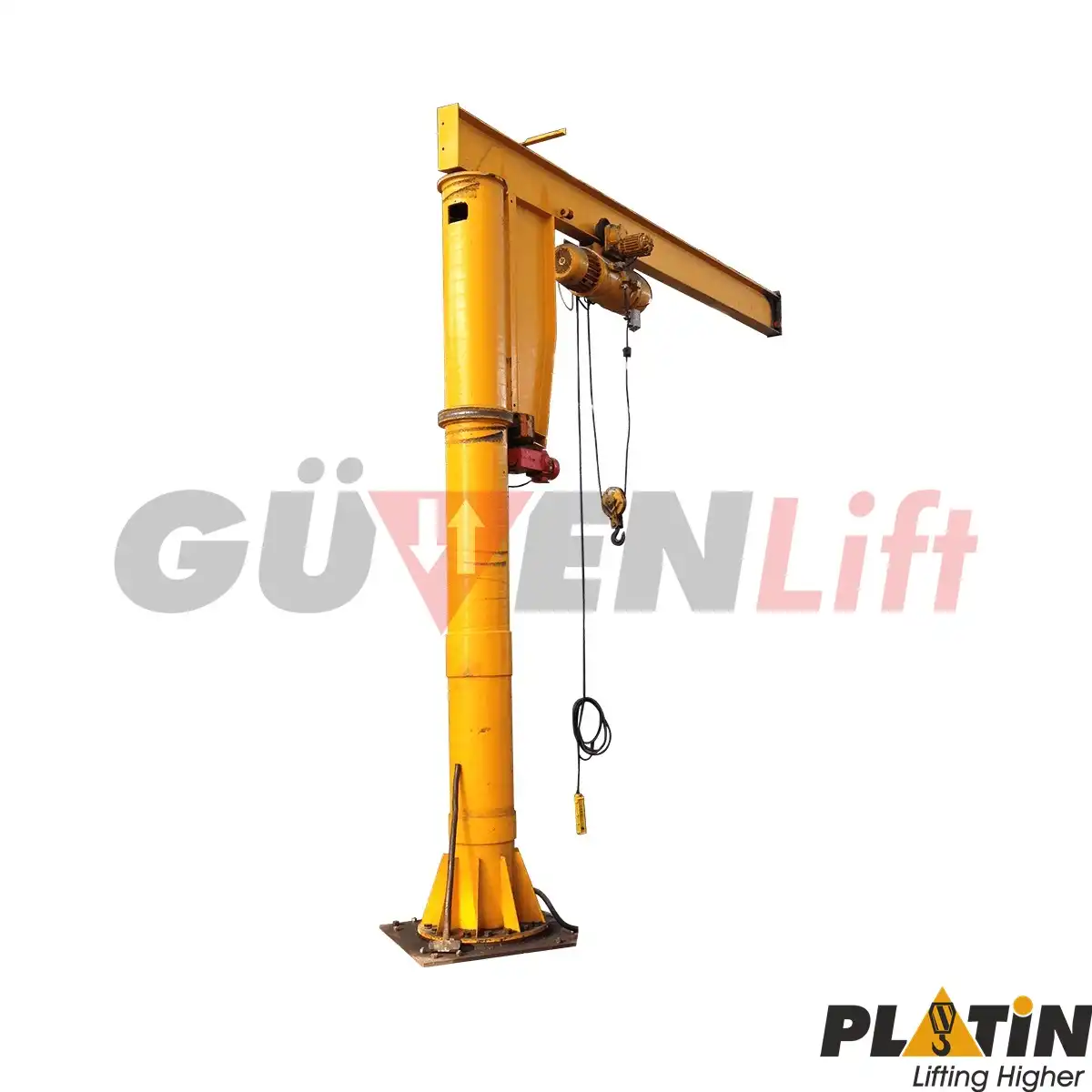
A jib crane is a type of lifting device that consists of a horizontal arm, known as a jib or boom, which is attached to a vertical mast or support pillar. The jib arm can rotate or pivot, allowing for a wide range of motion and positioning flexibility. Jib cranes are commonly used in industrial settings, workshops, warehouses, and construction sites for lifting and moving heavy loads in a localized area.
Jib Arm: The jib arm is the main horizontal component of the crane. It is typically made of steel and can vary in length, depending on the specific application. The jib arm extends horizontally from the mast and provides the reach needed to lift and move loads within a designated area.
Mast or Support Pillar: The mast is the vertical structure that supports the jib arm. It provides stability and strength to the crane. The mast can be floor-mounted, wall-mounted, or freestanding, depending on the available space and installation requirements.
Rotation Mechanism: Jib cranes are designed to rotate horizontally, allowing for 360-degree movement. The rotation mechanism can be manual or powered, depending on the crane's configuration. Powered rotation is often achieved through the use of electric motors or hydraulic systems.
Hoist or Lifting Device: Jib cranes are equipped with a hoist or lifting device that is attached to the jib arm. The hoist can be a chain hoist, wire rope hoist, or electric hoist, depending on the lifting capacity and specific application. The hoist is responsible for lifting and lowering the loads.
Free-Standing Jib Crane: This type of jib crane is independent and does not require attachment to a building or structure. It features a freestanding support pillar that provides stability. Free-standing jib cranes are versatile and can be moved or repositioned as needed.
Wall-Mounted Jib Crane: Wall-mounted jib cranes are attached to a building or structure, utilizing the existing vertical wall as support. These cranes are ideal for areas with limited floor space, as they do not require a separate support pillar.
Mast-Style Jib Crane: Mast-style jib cranes have a vertical mast that extends from the floor, similar to a traditional crane. The jib arm is mounted on top of the mast, providing height and reach. These cranes are suitable for applications that require higher lifting heights.
Increased Efficiency: Jib cranes offer localized lifting capabilities, allowing for efficient and precise load handling. They minimize the need for manual labor and reduce the risk of injuries associated with manual lifting.
Space Optimization: Jib cranes occupy minimal space compared to larger overhead cranes. They are suitable for facilities with limited floor space, as they can be installed close to walls or in compact areas.
Versatility: Jib cranes can be customized with various accessories and attachments to meet specific lifting requirements. These include electric or manual hoists, hooks, lifting magnets, or specialized lifting tools.
Wide Range of Applications: Jib cranes are utilized in various industries such as manufacturing, warehouses, automotive, construction, and shipping. They are ideal for tasks such as loading and unloading materials, assembly line operations, machine loading, and maintenance activities.
Copyright ©2022 Platin Vinç ve Vinç Ekipmanları